Top 5 Free Mac Data Recovery Software (2025)
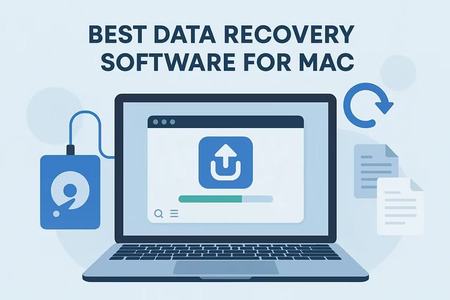
Losing files on Mac – whether due to accidental deletion, formatting, system error, or any other unexpected reason – can be distressing. Fortunately, in 2025, several free Mac data recovery methods, including manual backups and third-party recovery tools, are available online that you can try to recover your lost files.
However, recovering lost files using previous backups can be time-consuming and sometimes challenging, as well. Thankfully, dedicated free Mac data recovery software tools can help you recover lost or deleted files in Mac with a few simple clicks, with minimal effort. In this article, we’ll explore the top 5 free Mac data recovery software tools, explain what they do best, their limits, and when you should choose each one. Let’s get started!
Features to Check in Your Mac Data Recovery Software
When choosing a Mac data recovery software to restore lost files, it’s essential to thoroughly check and analyse all its features. Some essential features include:
- Recovery Size Limit: Check how much data can be restored using your free Mac data recovery tool (some tools only allow scanning or have a low free recovery limit).
- Different Scanning Capabilities: Multiple tools offer both basic scan and deep scan capabilities. Basic scan is for recovery of recently deleted files, but deep scan allows you to find files from formatted, corrupted, or severely damaged drives.
- Support from Different Storage Devices: Look for the data recovery software which supports the recovery of files from different storage devices, ranging from HDDs, SSDs, USB drives, SD cards, to external drives.
- Compatibility With Apple Silicon (M1, M2, M3): Modern Macs run on Apple Silicon chips, so the tool must be optimised for these processors for stable performance.
- User-Friendly Interface: Ensure your Mac data recovery tool provides a clean and simple GUI so anyone, even without technical expertise, can easily restore lost files.
Best 5 Free Mac Data Recovery Software Tools to Try in 2025
Now that you are familiar with different features to check in any free Mac data recovery software tools, it’s time to explore some best tools along with their features. Here are the top 5 among them:
1. Stellar Data Recovery Free for Mac
Stellar Data Recovery Free is a user-friendly free Mac data recovery software, especially designed to restore your deleted files by performing a thorough scan of your storage media. The software can recover files deleted from various internal or external storage devices, such as Mac internal drives, USBs, memory cards, and more. It supports modern file systems (APFS, HFS+), works with a variety of storage media, and lets you scan, preview, and recover deleted files.
Pros:
- This tool offers a simple and user-friendly GUI, making it easier even for beginners to restore deleted files.
- The software is useful for both simple deletions and complex data loss scenarios (formatted drives, corrupted volumes).
- The preview functionality of this software lets you preview the recoverable files before restoring.
- The free version supports recovery of lost files up to 1 GB for free. To restore files of a larger size, you can check and use the premium versions.
Cons:
- The Deep scan process on large drives or external media may take hours.
- To perform advanced recovery (bootable media recovery, unbootable system recovery, disk imaging), you need to purchase the premium version.
- If your deleted data is overwritten, even Stellar may struggle to restore it fully.
2. EaseUS Data Recovery Wizard for Mac
It is a popular data recovery utility, supporting recovery of accidentally deleted, formatted, or lost files from Mac internal drives and external media. You can easily restore deleted photos, videos, documents, and other types of files of various file formats using this tool. It offers both quick and deep scans, file-type filtering, and preview functionality — making recovery fairly simple and accessible.
Pros:
- EaseUS Data Recovery Wizard for Mac supports recovery of deleted files from various internal or external storage media, including USB drives, SD cards, and external HDD/SSD.
- It offers a clean, user-friendly interface with straightforward scan and recovery process.
- This tool can easily handle data recovery in different scenarios, including accidental deletions, empty Trash, formatted drives, corruption, etc.
- The free version actually performs some basic data recovery without payment.
Cons:
- The free version is limited in file size during recovery. For larger recoveries, you’ll likely need to upgrade to Pro.
- Some file formats (especially large or RAW photos) may not support previews under free mode.
- Features like bootable-drive recovery, cloud recovery, and advanced repair tools are available only in paid versions.
3. Recuva by CCleaner
Recuva is a well-known freemium data-recovery tool, allowing recovery of files deleted from internal or external disks, USB drives, memory cards, and more. The software supports various file systems such as FAT, exFAT, NTFS (and some Linux filesystems like Ext2/3/4) for storage media. It is known for several amazing features, such as it performs both quick and deep scans, previews recoverable photos, and helps retrieve files even from formatting, corrupted or damaged drives.
Pros:
- The freemium version of this Mac data recovery software makes it accessible even without spending any cost.
- A wizard-style, intuitive UI works well for beginners and non-technical users.
- This tool performs fast recovery of recently deleted files or a deeper scan for lost or formatted data.
- The tool is lightweight with a small size, and it doesn’t heavily burden system resources.
Cons:
- This software is designed only for the Windows OS. If you’re using a Mac, it won’t work unless via a virtual machine or other workaround.
- The full deep scans on large or damaged drives may take a long time and yield limited success.
- The free version is somehow limited in size; the paid version is often necessary for more serious recovery tasks.
4. Disk Drill Data Recovery
Disk Drill for Mac is an all-in-one data recovery software that supports the recovery of files deleted from various storage devices, including internal/external drives, USB drives, memory cards, and more. Its interface is clean and user-friendly, making it accessible even to non-technical users. The free version lets you scan and preview, while full recovery requires upgrading to the Pro plan.
Pros:
- The software offers a clean, intuitive GUI that simplifies the recovery process — good for beginners and non-tech users.
- It allows you to preview the recoverable files before restoring them, ensuring everything that is recovered is really required.
- Works with HFS+, APFS, and other common file systems, making it practical for modern Macs
Cons:
- If data has been overwritten or the storage device is physically damaged, Disk Drill may fail to restore files.
- The free version offers limited features, and data recovery on large drives can be time-consuming.
- Sometimes recovered files come jumbled or unnamed, making them hard to sort.
5. R-Studio
R-Studio is a powerful, cross-platform data recovery software, supporting restoration of files on both Windows and macOS devices. It also supports a broad range of file systems — including APFS/HFS+ on Mac and many on Windows/Linux. The advanced scanning feature of this tool allows creating disk images, which makes it popular among IT professionals and advanced users.
Pros:
- The software supports recovery of files even if the partition structure is lost or the drive is reformatted.
- It avoids writing to the original disk during recovery, reducing the risk of further data loss.
- It works on macOS (Intel + Apple Silicon), Windows, and Linux, which makes it flexible if you deal with multiple OS environments.
Cons:
- Many advanced features and detailed options are applicable only in paid versions.
- The free/demo version typically restricts recovery to a minimal file size (e.g. 256 KB). To restore files of a larger size, you need premium versions.
- Users need some understanding of file systems, partitions, and recovery principles to get good results.
Wrapping Up
If you are looking for free Mac data recovery software, then carefully check the above top 5 tools to help you restore lost or deleted files. Carefully check the pros and cons of the aforementioned top 5 free Mac data recovery software tools, then select the one that best fits your needs. Remember: free tools are excellent for many recovery situations, but there are limits. If a drive is physically failing or files are mission-critical, consider pausing software attempts and contacting a professional data-recovery service—software cannot reliably fix mechanical hardware failure.
Day Z. Duke Turns Heartbreak Into Power on ‘Pain In My Passt’

Day Z. Duke arrives with a sharp sense of purpose on her new single “Pain In My Passt,” a title that signals the wit, grit, and bite waiting inside the track. The wordplay sets the stage for a country anthem steeped in frustration, resolve, and the kind of emotional fire familiar to fans of Carrie Underwood’s early breakthroughs. Duke leans into that lineage with confidence. Her vocal delivery moves from controlled restraint to a clenched, almost trembling power that mirrors the evolution of a woman who has finally drawn the line.
The production balances modern polish with enough Southern edge to keep the story grounded. A tight drum pattern and a thread of electric guitar carry the melody forward while Duke’s voice cuts through with an honest mixture of tenderness and anger. There is real personality here, something that recalls the spirit of Miranda Lambert’s sharpest moments. Duke allows the hurt to sit beside the humor, which makes the chorus land with particular force. “Pain In My Passt” introduces an artist who understands how to turn personal chaos into a fight song, and it suggests that Day Z. Duke is ready to claim her own corner of contemporary country.
https://open.spotify.com/album/1mE0ST6pTeNZwjVMj9SAKZ
The Burnett Sisters Band Release “Easy Come, Easy Go”

With Easy Come, Easy Go, The Burnett Sisters Band step confidently into a new tier of contemporary bluegrass artistry. Long known for their seamless family harmonies, their deft blend of tradition and originality, and their increasingly visible presence on the festival circuit, the Burnetts arrive here with their most cohesive and compelling statement to date. The album’s 10 songs—seven originals penned or co-penned by guitarist/songwriter Geary Allen, alongside a handful of reimagined standards—showcase not only the band’s technical refinement but their deepening narrative voice. What emerges is a record that honors the roots of bluegrass while embracing a modern emotional range.
URL: https://www.burnettsistersband.com/
The opener, “Blaming You,” sets the tone with pointed lyrical clarity and some of the band’s strongest vocal interplay. Sophia Burnett’s delivery is warm but firm, capturing that delicate bluegrass balance between lament and resilience. Instrumentally, the track is crisp and unhurried: guitar, fiddle, and mandolin interweave with a lightness that gives the harmonies room to bloom. It’s a sharp reminder that the Burnetts’ greatest gift may be their ability to let simplicity shine.
“Fool’s Gold,” on the other hand, carries more rhythmic bite. Allen’s songwriting stands out here—lean, focused, and subtly metaphorical without ever drifting into abstraction. His guitar work anchors the groove while the sisters layer harmonies that evoke early country duos but with a contemporary sheen. It’s one of the album’s most radio-ready songs, and its energy serves as a perfect early-record lift.
The centerpiece of the first half, “Don’t Let Me Fall,” is arguably the emotional apex of the record. Its pacing is masterful: a slow build that welcomes fiddle and mandolin lines that feel both classic and fresh. What truly elevates the track, though, is the vulnerability in the vocal performance. The Burnetts don’t often lean into overt sentimentality, but when they do, they do so with restraint and authenticity.
The title track, “Easy Come, Easy Go,” is catchy, succinct, and reflective of the album’s larger themes—acceptance, release, and the ability to pivot from hardship with grace. At just under three minutes, it wastes no time and pulls off the kind of efficient, melodic accessibility that defines great bluegrass singles.
https://open.spotify.com/album/6ZAswrbf2xvSD5C5JojmXt
Of the traditionals, “Lovesick Blues” and “Julianne Johnson / Tie Your Dog, Sally Gal” offer two different showcases of the band’s deep roots. The former leans into a classic old-time wail, while the latter—sparked by joyful tempo and tightly executed fiddle runs—captures the vitality of their live shows.
The home stretch of the record reveals the band’s narrative sophistication. “The Youthful Soldier” and “Sorrow, Grief, and Pain” are striking examples of Allen’s ability to craft historical and personal storytelling with equal weight. The songwriting avoids melodrama, choosing instead to let imagery and arrangement evoke the emotional stakes. Both tracks highlight the Burnetts’ impressive ability to honor traditional idioms without sacrificing their contemporary voice.
And then there is “The Song of the Mountains,” the recent summer 2025 chart-topper that solidified their status as a rising force. It’s easy to hear why it resonated: it’s vibrant, melodic, and driven by a chorus built for festival sing-alongs. Overall, Easy Come, Easy Go succeeds not just because of its musical polish but because it articulates who The Burnett Sisters Band are right now: artists on the rise, rooted in tradition yet unafraid to evolve. It’s a record that rewards repeated listening and marks a major milestone for a group clearly poised for even greater heights.
Gwen Waggoner
Dale Ann Bradley Releases “Mary’s Rock”

Every so often, a bluegrass single arrives that feels less like a track release and more like the opening of a dusty, long-forgotten book — the kind you’d find tucked into a cedar chest in an abandoned mountain homestead. “Mary’s Rock,” Dale Ann Bradley’s arresting new single, is exactly that kind of discovery: a song that reads like living folklore, delivered with the steady assurance of an artist who knows how to turn local legend into sweeping emotional experience.
What immediately distinguishes “Mary’s Rock” is how cinematic it feels without relying on large production gestures. There’s no grand string section, no dramatic percussion, no overly assertive soloing. Instead, Bradley and her collaborators rely on carefully placed instrumental colors to create atmosphere. The guitar establishes the terrain. The mandolin throws glints of light across it. The bass is the earth beneath the story — grounding, subtle, inevitable. Together, they form a soundscape that feels carved out of the mountains themselves.
The narrative at the center of the song is a gripping one: Mary, a bride effectively traded through marriage; Francis, the man she is bound to; a climb up a mountain that carries echoes of destiny; and a disappearance that has become part of regional lore. Yet the genius of Bradley’s treatment is that she approaches the story not like a historian but like a witness. She doesn’t deal in exposition; she deals in sensation. Her voice conveys the weight of secrets, the chill of elevation, the tremor of uncertainty that must have accompanied that fateful ascent.
https://open.spotify.com/album/1WwOdcfl8cphiG9kno3ljP
Sonically, the track balances warmth and eeriness with impressive finesse. Bradley’s timbre remains one of the most recognizable in modern bluegrass: pure without being fragile, emotive without being indulgent. There is a steadiness to her tone that gives the tragedy at the heart of the story even more tension. She doesn’t telegraph the mystery — she embodies it. When she sings of Mary’s fate, there’s an almost journalistic neutrality, but underneath it lies something deeply human: compassion for the lost and unspoken critique of those who controlled the lives of women in Mary’s era.
Lyrically, the song excels by not over-explaining. The power is in the restraint. We know just enough to feel the dread in Francis returning alone. We know little enough that our imaginations fill in the cold, jagged gaps. The ambiguity becomes the emotional hook — a rare feat in a genre that often favors narrative clarity. This is where “Mary’s Rock” transcends tradition and enters the realm of modern songwriting craft: it trusts listeners to engage, interpret, and feel the story rather than passively receive it.
The pacing is another of the song’s quiet triumphs. It unfolds in steady increments, mirroring a climb up uncertain terrain. This structural echo — the music rising as the characters rise — adds a cinematic quality that rewards repeated listens. You start to notice how the mandolin flickers where the light might thin, or how Bradley pauses slightly between phrases as though catching her breath on the mountainside.
“Mary’s Rock” succeeds because it refuses to be just a retelling. It is an invitation — into history, into mystery, into empathy. Dale Ann Bradley has crafted a single that resonates beyond its runtime, lingering like an unanswered question and a half-remembered dream. It’s a song that proves once again why she remains one of the most indispensable interpreters of Appalachian narrative music: she not only preserves stories — she animates them.
Gwen Waggoner
Eggnog for the Damned: Fifteen New Christmas Songs of 2025 That Refuse to Sit Quietly by the Tree

Christmas music is supposed to behave itself — twinkle politely in the background, smell like pine and nostalgia, and never, ever ask too many questions. But 2025’s new crop of holiday songs didn’t get that memo. These tracks kick down the chimney, spill the eggnog, and start testifying, flirting, rocking, and soul-searching all at once. Somewhere between sacred hush and electric grin, this year’s Christmas releases remind us that the season isn’t just about comfort — it’s about collision: faith slamming into joy, memory wrestling with desire, and hope refusing to be quiet. What follows is not a gentle carol service, but a cracked, glorious mixtape for the faithful, the restless, and anyone who’s ever needed a little noise to feel the miracle.
https://open.spotify.com/playlist/2VxCzfxYwO2G3oQ8uDj4UL?si=G8_MSE0sT5q0H3qCS1U-Zg
- Elvira Kalnik — “I Met You on Christmas”
This one slips in sideways, wrapped in romance and frost. Elvira Kalnik doesn’t shout; she remembers. The song feels like a half-forgotten kiss under cheap lights and real snow, where Christmas becomes the accidental witness to love that didn’t ask permission. It’s tender, cinematic, and quietly devastating. - Pentatonix — “Bah Humbug”
A cappella rebels in Christmas drag. Pentatonix flips seasonal cynicism into vocal gymnastics, turning Scrooge-energy into playful rebellion. It’s clever, crisp, and oddly cathartic — a reminder that even skepticism deserves harmony. - Robert Ross — “Rockin’ Christmas”
Ross doesn’t knock — he kicks the door in with a Telecaster. This is barroom Christmas: loud, loose, and proudly unpolished. It smells like spilled beer and tinsel, and that’s the point. Faith, family, and fun collide in a way that feels honest rather than tidy. - Lauren Spencer Smith — “Last First Christmas”
Heartbreak wears a Santa hat here. Smith delivers a slow-burn ballad that aches with memory, the kind of song that makes December feel longer and lonelier. It’s not about joy — it’s about what’s left when joy moves out. - DPB — “The Wonders of Christmas”
Pure wonder, unapologetically so. DPB leans hard into joy, awe, and spiritual optimism, delivering a track that sounds like Christmas morning bottled and shaken. This is belief with a beat — bright, buoyant, and fearless about its message. - Little Big Town — “The Innkeeper”
Storytelling Christmas. Country music has always known how to narrate faith, and this song proves it. A quiet, reflective retelling of the Nativity from the margins, it feels ancient and immediate at the same time. - Gwen Stefani — “Hot Cocoa”
Sugar rush Christmas. Stefani doubles down on playful pop excess, turning seasonal kitsch into a knowing wink. It’s fluffy, fun, and impossible to take seriously — which is exactly why it works. - Eddy Mann — “O’ Come”
This is the soul of the season laid bare. Mann transforms reverence into something raw and lived-in, a gospel-infused plea that feels more like prayer than performance. It doesn’t entertain — it testifies. - Jonas Brothers ft. Kenny G — “Coming Home This Christmas”
Smooth nostalgia with a saxophone halo. This track wraps sentimentality in polish, evoking airports, reunions, and the long drive home. It’s comfort food, expertly prepared. - Emily Ann Roberts — “Come Home to You”
Country warmth and holiday longing intertwine here. Roberts sings for anyone counting miles instead of days, turning Christmas into a promise rather than a place. - Kylie Minogue — “XMAS”
Slick, stylish, and joyfully superficial. Kylie delivers holiday pop that sparkles without apology. No soul-searching here — just dancefloor tinsel and champagne cheer. - Sara Bareilles & Brandi Carlile — “Salt Then Sour Then Sweet”
A grown-up Christmas duet. This song understands life’s flavors and doesn’t rush to resolve them. It glows quietly, like candlelight after the guests leave. - JVKE & Forrest Frank — “Christmas Morning”
Modern Christmas for a streaming generation. Bells meet beats, innocence meets irony, and somehow it works. Youthful and restless, like the holiday itself. - Gwen Stefani — “Shake the Snow Globe”
Chaos Christmas. This track embraces the mess — emotional, sonic, and seasonal. Shake it hard enough and something joyful spills out. - Miranda Lambert & Parker McCollum — “Band Together Texas”
Not born as a Christmas song, but adopted by the season through communal spirit and shared grit. It closes the list like a group hug — imperfect, loud, and real.
Taken together, these songs prove that Christmas in 2025 isn’t a single sound. It’s a collision — sacred and profane, polished and ragged, reverent and reckless. And that’s exactly how it should be.
–Leslie Banks
IRIEspect Announces New EP “Lost In Time” Out December 12 on Dubshot Records
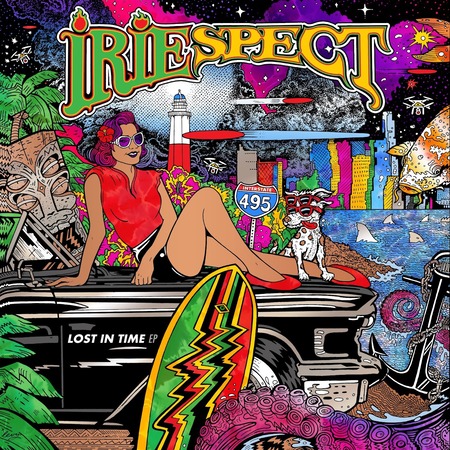
A vibrant, genre-bending collection featuring collaborations with Ras Ajai, Skygrass, Duvbear and a bold Manu Chao cover
Long Island, NY — December 2025 — IRIEspect, the explosive seven piece reggae, dub, jam, hip hop and Latin outfit signed to Dubshot Records, proudly announces the release of its new EP “Lost In Time,” arriving Friday, December 12. Showcasing the band’s most dynamic and versatile work to date, the project highlights IRIEspect’s infectious energy, wide ranging influences and rapidly growing presence across the East Coast and beyond. Listen HERE!
The “Lost In Time” EP brings together five standout tracks, each offering a distinct world of sound while staying rooted in the band’s trademark blend of roots reggae, rock, live dub, Latin rhythms, hip hop and dancehall. With more than two hundred shows across Long Island, New York City and the greater Northeast in recent years, plus performances with Collie Buddz, The Original Wailers and a sold out show with Steel Pulse at Brooklyn Bowl, IRIEspect enters 2025 with undeniable momentum.
TRACKLIST AND SINGLE BREAKDOWN:
Want Me Too featuring Ras Ajai
A bright, beachy and radio ready single featuring Ras Ajai of Sean Paul’s Dutty Rock Records. With steel pan textures and an uplifting island vibe, this track delivers instant feel good energy.
Nuh Leave Mi Alone featuring Skygrass
A tough, dancehall charged anthem with Kingston artist Skygrass, who has nearly two hundred thousand Instagram followers. Built for clubs, parties and festival speakers, this is the reggae single that hits with force.
Lost
The EP’s most compositionally advanced and artful track. A rootsy, dynamic and emotionally rich arrangement featuring soaring horn lines that showcase the band’s musicianship and depth.
Me Gustas Tu
A vibrant reimagining of the Manu Chao global hit. With more than one million followers, Manu Chao remains a giant in world and Latin reggae, and IRIEspect delivers a fresh version blending Latin reggae and hip hop in both Spanish and English. Complete with a melodica solo, this is the EP’s most versatile song and a strong fit for international and hip hop markets.
Dangerous featuring Duvbear
A raw and punk influenced reggae rock tune featuring Duvbear, also known as Shalom Miller, son of Matisyahu. With bold dynamics and a high energy punch, “Dangerous” adds a gritty edge to the project.
ABOUT IRIEspect:
IRIEspect is a genre blending powerhouse from Long Island, New York, delivering a high energy live show and a sound that fuses roots rock reggae with dub, Latin, hip hop, dancehall and more. The band has built a devoted following across the Tristate and Northeast markets and has performed more than two hundred shows in recent years. They have shared stages with major reggae and alternative artists including Inner Circle, Barrington Levy, Long Beach Dub Allstars, Pepper, Badfish, Fortunate Youth, Sister Nancy, Artikal Sound System, Pete Francis of Dispatch and many others.
Their 2024 debut full length LP on Dubshot Records introduced the standout single “Strong Island” and marked a significant new chapter for the band. IRIEspect continued to build momentum in 2025 with singles including “Want Me Too,” “Nuh Leave Mi Alone,” “Lost” and “Me Gustas Tu,” all available now on major streaming platforms.
The “Lost In Time” EP arrives December 12 on Dubshot Records, further establishing IRIEspect as one of the most exciting emerging voices in modern reggae fusion. Fans of Bob Marley, Sublime, Stick Figure, Manu Chao, Elovaters, Dirty Heads, Tropidelic, Rebelution, Iration and similar artists will feel right at home.
Press materials, booking info, live videos and additional assets are available through the official IRIEspect link hub.
For All Music, Media, Social Links, Past Shows/Artists performed with etc, visit https://linktr.ee/IRIEspect -IRIEspect #irie #respect
Duanna’s open tabs Is The Chill Electronic Escape Your Brain Has Been Begging For

Duanna’s brand-new EP, open tabs, feels like the soundtrack to every moment when you want the world to quiet down for a second. It is a six-track listen filled with soft beats, glowing synths, and vocals that feel almost weightless. If your brain has been bouncing between too many thoughts lately, this is the kind of project that helps everything settle.
What is immediately striking is how smooth the transitions are. One song glides into the next in a way that makes the whole EP feel like a single continuous vibe. It is perfect for late-night scrolling, early morning commutes, or anytime you want music that holds your mood instead of pushing it around.
The production feels carefully considered without sounding stiff. There are small flickers of sound tucked into the mix that keep things interesting, but nothing ever pulls you out of the haze the EP sets up. Duanna has a great instinct for restraint, and it shows in how naturally each track unfolds.
open tabs hits that sweet spot of music that works in the background but also rewards a focused listen. It is moody, airy, and easy to get lost in, which is exactly why it deserves a spot in your rotation.
Rebekah Snyder Releases Heartwarming Holiday Single “Up on the Housetop,” Out Friday, December 12th

RIYL: Miranda Lambert, Tyler Childers, Kacey Musgraves, Chris Stapleton, Brandi Carlile
Nashville, TN — December 12, 2025 — Alt-country/Americana artist Rebekah Snyder ushers in the holiday season with her charming new single, “Up on the Housetop,” a modern country take on the classic Benjamin R. Hanby Christmas tune. The track arrives everywhere tomorrow, Friday, December 12th, and carries with it a story rooted in family, nostalgia, and once-in-a-lifetime timing.
The idea sparked over Thanksgiving when Snyder traveled to Nashville to continue work on her upcoming full-length album with producer Dean Miller. Planning to bring her three children along for the trip, Snyder realized she had a rare opportunity: to record a Christmas song with them while they are still young enough to feel the pure magic of the season.
“I wanted to pick something the kids genuinely love,” Snyder shares. “My son Thomas performed ‘Up on the Housetop’ at his second-grade Christmas pageant last year, and he knew every word. It felt like the perfect fit.” With her youngest son and daughter each taking a line, her middle son providing the iconic “clicks,” and all three joining their mother for a joyful chorus of “ho ho ho,” the result is a charming multigenerational performance filled with warmth and authenticity.
Following her recent success with Adam Cunningham on their charting duet “Don’t Ever Date A Yankee,” which reached #138 on the Music Row Breakout Country Chart, Snyder steps into the holiday spotlight with a rendition shaped by her love of classic country traditions. Recorded with a nod to Dolly Parton’s cover of Jimmie Rodgers’ “Blue Yodel No. 8,” the track features fiddle, banjo, and a playful “blue” yodel that brings new life to the beloved Christmas standard.
For Snyder and her children, a resilient family who have overcome significant challenges, this recording became more than a nostalgic project. It became a celebration of togetherness, joy, and the simple, enduring hope of the holiday season.
“Up on the Housetop” is available on all streaming platforms Friday, December 12th.–
https://www.instagram.com/rebekahsnyderofficial/
“CALL THE MIDWIFE” STAR FRANCESCA FULLILOVE NOMINATED FOR TV TIMES AWARDS 2025 — SECOND YEAR IN A ROW

“CALL THE MIDWIFE” STAR FRANCESCA FULLILOVE NOMINATED FOR TV TIMES AWARDS 2025 — SECOND YEAR IN A ROW
Francesca Fullilove, the young breakout talent from Call the Midwife, was nominated for Favourite Young Actor (Under 18) at the TV Times Awards 2025, marking her second consecutive year being recognised by one of the UK’s leading television awards.
At just 12 years old, Francesca has already become one of the most promising young actors on British television. Her warm, expressive performance in the long-running BBC drama has charmed both audiences and cast alike, earning her a growing fan base and recognition across the industry.
The 2025 TV Times shortlist featured standout rising talent from series including Coronation Street, Emmerdale, Hollyoaks, and Adolescence. Francesca appeared alongside ten of the UK’s most exciting young performers, reaffirming her place as a name to watch in the coming years.
A Rapidly Rising Career
Francesca’s acting journey began early, with standout roles including appearances in Call the Midwife—where she has worked with household names such as Megan Cusack, Jenny Agutter, Judy Parfitt, Cliff Parisi, Helen George, Miriam Margolyes, Stephen McGann, and Laura Main.
She also appeared in a well-loved Petit Filous commercial with her younger brother, further cementing her on-screen versatility.
Away from filming, Francesca leads a vibrant life filled with dance (modern and street), baking, shopping, and spending time with her family in Epsom, Surrey. With Italian heritage on her mother’s side and a warm, grounded upbringing, she brings a relatable charm to her growing public profile.
National Attention Beyond Local Press
While Francesca has already received strong media coverage across Surrey—thanks to her impressive back-to-back nominations—her team is now looking toward broader national and entertainment platforms as her career continues to develop.
Her recent features include:
- Your Local Guardian
- Surrey Comet
- TresA Magazine
- Radio St Helier (Desert-Island-Disc style interview)
As her visibility grows, Francesca hopes to build connections within the wider entertainment industry, expand her Instagram presence (@francescafullilove), and reach audiences who resonate with authentic, emerging talent.
A Bright Future Ahead
Francesca’s second TV Times nomination underscores her dedication, natural screen presence, and clear passion for acting. With continued industry recognition and a strong support network behind her, she’s poised for an exciting year ahead—including new opportunities both on-screen and in media.
TV Times Awards 2025 Update
Voting for the TV Times Awards 2025 has now closed, and the results have been published. Although Francesca did not take home the award this year, her consecutive nominations highlight her rising profile and the strong support she continues to receive from viewers and industry peers alike.
Follow Francesca Fullilove
Instagram: https://www.instagram.com/francescafullilove/
Spotlight: https://app.spotlight.com/9490-6754-7718
Where the Light Gets In: Alex Krawczyk’s “Wonders Await” Rekindles the Spirit

Where the Light Gets In: Alex Krawczyk’s “Wonders Await” Rekindles the Spirit
There’s a certain kind of artist who doesn’t just write songs—they excavate them. They dig through memory, intuition, scars, and fleeting flashes of grace until something true rises to the surface. Alex Krawczyk has always lived in that space, and on her sophomore LP Wonders Await, she leans all the way in. This is an album that doesn’t posture or preen. It whispers, breathes, leans close. It reminds you that healing is messy and beautiful and utterly non-negotiable if you want to keep your soul intact.
From the opening seconds of “Falling in Love,” you get the sense that Krawczyk isn’t content with surface-level storytelling. The horns glow, the acoustic guitar pulses like a heartbeat, and her voice—a gentle yet resolute flame—reminds you what it feels like to surrender to something bigger than your own fear. It’s not a naive love song; it’s a chronicle of vulnerability reclaimed. She sings like she’s standing on the edge of something frightening and exquisite, arms open anyway.
“The Beach Song” moves like a warm breeze carrying sand and memory. Krawczyk draws a world where moonlit moments become emotional anchors, a reminder that joy doesn’t have to be perfect to be real. There’s a road-worn romanticism here, a sense that she knows exactly how fragile bliss is and chooses to hold it anyway. And maybe that’s the album’s central power: a refusal to discard the small miracles.
Then comes “When the Road Is Uneven,” a track that feels like it belongs in the canon of spiritual folk medicine. It’s a companion piece for the weary, a song for anyone who’s ever stared down the long road and wondered whether they’d make it home. The chorus—“let the music renew your stride”—isn’t just lyricism; it’s lived wisdom. Robbie Roth’s production lets the arrangement breathe, giving space for the emotional weight to settle and lift in the same breath.
The title track, “Wonders Await,” is radiant in a way that doesn’t shy away from the truth that life can break you before it blesses you. Krawczyk sings with an almost childlike openness, rediscovering the world with a beginner’s mind. Her vocals float atop airy keyboards and Patrick Smith’s shimmering flute, creating a little portal of optimism—one you didn’t realize you needed.
And then there are the emotional side paths:
“West Coast,” a wistful dreamscape painted in ocean tides and release.
“Justice,” a restrained slow burn about longing for clarity.
“Payphone,” a nostalgic gem that dips into the past with tenderness rather than irony.
But the closing pair—“I Am a Song” and “Carry On”—are where Krawczyk delivers her thesis. These tracks aren’t just songs; they’re affirmations. They are a hand on your shoulder, a voice reminding you that love, art, resilience—these things outlast the storms.
Wonders Await is the rare kind of album that doesn’t demand your attention but earns it. It’s gentle without being soft, hopeful without denying the dark, and honest in a way that feels like conversation rather than performance.
In a world crowded with noise, Alex Krawczyk offers signal—clear, human, healing. Wonders, indeed, await.
–Lonnie Nabors
Elina’s ‘A Place I Recognise:’ A Conversation on Healing, Growth, and a Transformative Year

Sweden’s Elina returns to the rural landscapes of her hometown in ‘A Place I Recognise,’ an outpouring of songs born from a year of brave decisions, a soft rediscovery of self, and her way back to an inner place she’d long been circling.
In this exclusive conversation with the songwriter, she reflects on moments that reshaped her, healing, and finding the clarity and courage to begin again…
The EP follows a narrative of returning home – partly inspired by your move back to your rural hometown in Sweden, and partly shaped by personal experiences. Could you share which events influenced the lyrics in this collection?
I went through quite a few big changes last year that was a really long time coming. Unfortunately, pursuing a career in music took a toll on my mental health in so many ways because of many different reasons. It wasn’t until last year that I finally gathered the strength and courage to start a new chapter and it turned out to be the best decision I’ve made in ages. It led me to healthier relationships personally, professionally, and with myself.
Which song on the record was your favourite to write, and what made it so special?
I’d say ‘Scars.’ It was my first session in ages earlier this year in London, and I was super nervous because I’m such a big fan of James’s music. But it turned into one of those rare experiences where everything just felt easy, from writing the song to recording it, and throughout the whole collaboration with James and his team. It was all pure joy to me.
There’s such an uplifting energy throughout the EP; it feels like you were in a positive creative space. Would you say the songs reflect your healing journey and path toward self-discovery as it unfolded?
Thank you, that’s such a big compliment! They definitely do, and I’d say I’ve come home creatively with these songs in a way I haven’t really felt before. As an artist, it’s a constant process of navigating and reinventing and this time we were all completely in sync in the process when it came to production, sound, and the overall soundscape – which was really uplifting and inspiring. Lyrically and emotionally, the songs are so closely tied to recent experiences that they feel like an extension of myself at this point. That’s all you ever hope to achieve, really, so it feels like I’ve shared something that’s 100% me.
How do you hope listeners will connect emotionally with the songs? Are there particular themes you feel are woven throughout the EP?
My constant hope is that listeners will feel seen and inspired when they hear my songs. This EP comes from a place of personal reflection, growth and choosing myself after a long period of challenges. If these songs can encourage others to do the same and to prioritize their own happiness, trust their instincts and embrace the courage it takes to create a life that feels true to them, then it’s more than I could wish for. All the themes throughout the EP, like self-discovery, resilience, freedom and coming home to yourself, are all tied together with that sense of empowerment and hope, if that makes sense.
You’ve blended indie folk and pop so beautifully, all while staying true to your signature sound. Were there any musical influences that guided you during the making of this record?
That makes me really happy. I feel like I finally got to bring in some band influences and full arrangements this time, something I’ve longed to do since the beginning. I’ve dipped my toes into it on previous records, but never fully explored it. My heart has always, and will always, beat for rock music and bands. It’s the music I grew up with and the music that inspired my writing. So this EP became a way to blend that lifelong bank of influences with my original, softer soun,d and that’s been incredibly fun!
Listen To ‘A Place I Recognise,’ Out Now
Vienna Vienna’s ‘Buzz’ Turns Existential Chaos Into a Glimmer-Rock Adrenaline Shot
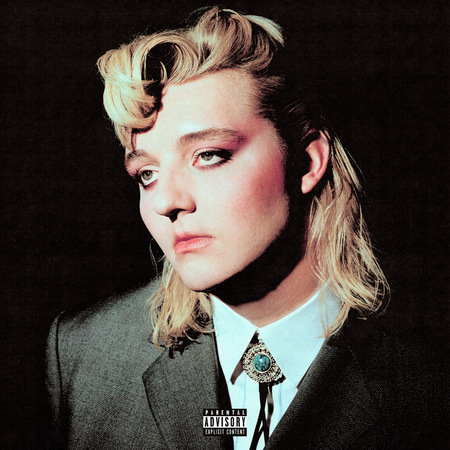
“Buzz” is the sound of your brain melting in real time, and Vienna Vienna is standing over the pot stirring with a neon-pink tambourine, grinning like he knows exactly what he’s doing to you. This isn’t a song—it’s an electrical short circuit dressed up as indie rock, the kind of thing you blast at 2 a.m. when you’re still vibrating from the world’s nonsense and your own nervous system is staging a coup.
From the first fuzzy guitar scrape, Vienna Vienna makes it clear we’re not here for serenity. No, “Buzz” is an ode to the modern condition: everything’s too loud, too fast, too stupid, and somehow too bleak and too hilarious at the same time. The drums punch like they’ve been up for three days on caffeine and catastrophic headlines. That tambourine? It’s the little voice in your head going, “Why is everyone like this?” except now it’s keeping time.
Vienna Vienna sings like a man who’s seen the abyss, took notes, and decided the only reasonable response was to write a banger. “I’ve seen a devil, I’ve seen a devil buzz,” he mutters, tossing off lines about eight-dollar despair and societal decay like he’s reading coupons for the apocalypse. It’s bleak poetry wrapped in party lights, and that’s the brilliance of it—he’s not escaping reality, he’s dancing in the wreckage, kicking up dust, laughing because crying is too predictable.
https://viennavienna.ffm.to/buzz
There’s a ramshackle glory to the whole thing, the same spirit that drove punk kids to scream about alienation except now the alienation has Wi-Fi and a subscription model. Vienna Vienna taps into that jittery youth-doomerism vibe without turning it into a costume. This isn’t nihilism—it’s survival by groove. The man understands that if the world insists on bombarding us with existential static, the least we can do is turn the buzz into a hook.
“Buzz” joins earlier singles “Idle Hands” and “Company Hunting” in this expanding universe of glimmer rock, where queerness, chaos, humor, and heartbreak swirl together until they’re indistinguishable. But this track is the most potent hit yet. It feels like the EP Entertain Me tearing through its chrysalis, wings twitching, ready to thrash its way into every overstimulated ear.
Vienna Vienna isn’t trying to save you. He’s trying to make you feel alive in the middle of the noise. And with “Buzz,” he damn well succeeds.
https://www.facebook.com/viennaviennamusic
https://www.tiktok.com/@viennavienna
–Leslie Banks
JD DAYS ANNOUNCES CHRISTMAS ANTHOLOGY — A CINEMATIC MUSICAL JOURNEY OF LOVE, FORGIVENESS & FESTIVE MAGIC
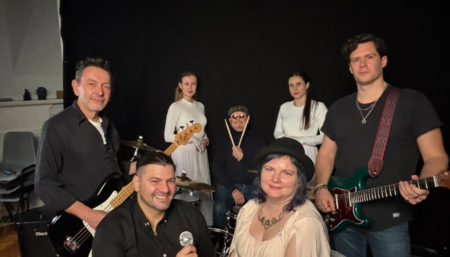
JD Days return this winter with Christmas Anthology, a ten-track festive project blending heartfelt songwriting with vivid, Pixar-style storytelling. The album features six original songs and four re-imagined holiday classics, each accompanied by its own short 3D-animated film.
From snowy New York romances to Santa’s rock-and-roll sleigh ride, Christmas Anthology invites listeners to rediscover the season through love, unity, renewal, and forgiveness.
A PIXAR-STYLE CELEBRATION OF THE HOLIDAYS
Each track forms part of a wider narrative, brought to life through cinematic animation and JD Days’ signature pop-rock and folk influences. Together, the songs and visuals create a warm, immersive experience designed to “light the dark” during the winter season.
TRACK HIGHLIGHTS
- Evergreen Christmas – A glowing winter love story
- Angel Woman – A dawn-lit ballad of grace, hope, and renewal
- Here Comes Santa – JD Days’ upbeat modern-rock Christmas anthem
- All You Need Is Love – A luminous finale celebrating togetherness and forgiveness
RELEASE & AVAILABILITY
- Digital Album + Video Anthology: 5 December 2025 on Spotify, Apple Music, YouTube Music, and Amazon Music
- 4K Video Premiere: Vimeo & YouTube – 20 December 2025
- Radio Campaign: Holiday rotation begins late November 2025 (Adult Contemporary / Holiday formats)
- Sync Licensing: Seasonal placements via Sony Music Publishing, Warner Chappell Music & Universal Production Music
BRIDGE VIDEOS — CONNECTING THE STORY
The project features 10 cinematic bridge videos, each narrated by a warm American female voice, seamlessly guiding listeners through the Anthology’s emotional arc.
Featured Bridge Videos:
- Mistletoe
- Evergreen Christmas
- Shape of My Heart
- Angel Woman
- Somewhere
- Two Lovers
- Here Comes Santa
- Live for Today
- Happy Xmas (War Is Over)
- All You Need Is Love
- Evergreen Christmas (Instrumental)
All bridge videos are available in 1080p MP4 with professional voiceover.
ABOUT JD DAYS
JD Days is a UK-based creative collective led by singer-songwriter James, blending pop-rock, folk, and cinematic visual storytelling. Their mission is to create timeless music and imagery that celebrate love, forgiveness, and the shared humanity at the heart of the holiday season.
“At Christmas, music and love can still light the dark. This anthology is our gift to anyone searching for hope, connection, and a reminder that every heart deserves forgiveness.”
– James, JD Days
Follow JD Days
Instagram: https://www.instagram.com/jd_days/
Website: https://www.jddaysproductions.com/
Spotify: https://open.spotify.com/artist/4eF2rwiLVjQu1cETNJF7WS
India International Music Week 2026 Sets the Stage for a New Era of Global Music Exchange

Easy Wanderlings (India) bring their warm, soul-funk signatures; Edwin Raphael (Canada) adds introspective alternative songwriting; J-Silk (France) fuse electronic finesse with jazz fluidity; Jasmine Kiara (Canada) pushes sleek R&B-pop; and Reuben De Melo (Australia) delivers earnest folk-pop charm. There’s Naari (Germany) with her alt-pop edge, Siki Jo-An (South Africa) with a rich blend of jazz and African soul, experimental innovators Tamil Jazz Collective, homegrown favourite Tejas, and the art-pop vibrance of Two Summ.
It’s an eclectic, intentionally inclusive mix, spanning genres, genders, and geographies, and one that mirrors IIMW’s growing identity as a place where future-facing artists find real global pathways.
“IIMW 2026 is about giving emerging artists a stage and showing that music from India and beyond has the power to travel, connect and inspire,” says Sushil Chhugani, Director of IIMW and India Music Exchange. “The artistry on display proves that South Asia is ready to be part of the global conversation.”
Founded by India Music Exchange (IMX), IIMW has quickly become a crucial meeting point at the crossroads of culture and commerce, a space where Indian artists and international professionals collide, collaborate, and plant seeds for what comes next. Its launch last year placed India firmly on the global music map; its 2026 edition looks ready to redraw that map entirely.
Buy Tickets HERE.
Amber Sauer Isn’t Rising—She’s Erupting

Some artists arrive with a whisper. Amber Sauer showed up with a full-force, goosebump-inducing, spine-tingling presence that refuses to be ignored. There’s something almost unfair about a voice like hers—raw power wrapped in warmth, precision balanced with soul, and an emotional truth that cracks you open before you even realize what’s happening.
Amber doesn’t chase trends. She chases honesty. That’s why her vocals hit with such impact—she’s not performing atyou, she’s letting you inside the story. One moment she’s unleashing Aretha-level fire, the next she’s gliding with a Whitney-smooth tenderness, and then—just when you think you’ve figured her out—she drops the kind of modern sparkle you’d expect from Lizzo or Adele. And through all of it, she’s unmistakably Amber. Bold. Radiant. Completely unfiltered in the best possible way.
What makes her shine isn’t only the voice (though, let’s be real, the voice is insane). It’s the soul behind it. She’s warm, hilarious, generous, and deeply connected to the people who listen to her. Fans don’t just love her—they feel her. In a business that runs on manufactured personas, Amber is the real thing, and audiences latch onto that instantly.
Her live shows? Forget it. Those are their own universe. When Amber steps on a stage, the energy shifts. She creates this kind of electric intimacy—big, bright, and emotional enough to stick with you for days.
Season 14 of The Voice—Kelly Clarkson’s first year—was where the rest of America caught a glimpse of what the industry had already been whispering about. Originally from Paradise, California, she made her way to Los Angeles and quickly became the secret weapon for Grammy-winning music directors like Shep Crawford, Printz Board, Kim Burse, and Ray Chew, who trust her to elevate anything she touches.
She’s backed some heavy hitters: Jennifer Lopez, Patti LaBelle, Eric Benét, Sheryl Lee Ralph, B. Slade, and more. She’s toured with legends—Faith Evans, Kelly Price, Nik West, Kenny Lattimore, Angie Stone, and the incomparable Natalie Cole.
Her TV résumé is stacked too:
Dancing with the Stars (ABC), I Can See Your Voice (FOX), Celebration of Gospel (BET), Your Honor (Showtime), NCIS: Origins (CBS), Smashing Glass (CMT), The T.D. Jakes Show, and on and on.
Anyone who’s seen her live will tell you the same thing: she’s lightning in human form. A rare mix of power and peace, grit and grace.
And now? She’s standing right on the edge of the moment where everything clicks. Music is shifting toward authenticity, toward artists with something real to say—and Amber Sauer has been doing that her entire life. Her voice can’t be mimicked. Her artistry doesn’t fit a mold. She’s exactly the kind of force this generation is overdue for.
Amber isn’t just rising—she’s about to lift the whole room with her. If greatness is measured by impact, connection, and the ability to move people at their core, then she’s not “on her way.” She’s already there. And she’s only getting started.
Follow Amber Sauer on social media: @AmberSauer
Introducing Dougla Boi: Kalpee’s New EP Honoring Heritage, Healing, and Home

Kalpee returns with Dougla Boi, a powerful new EP available now, led by the single “Under.” Blending New Calypso with touches of dancehall, R&B, and afrobeats, the Trinidad & Tobago artist continues to carve a space that is less about genre and more about emotion. Named after the Trinidadian term for someone of mixed African and Indian heritage, Dougla Boi explores the complexities and harmonies of identity with honesty and pride. Across six tracks—including the chart-topping “Everybody” featuring Full Blown, as well as “No Denying”, “Breathe,” “Under,” and “Heaven So Close”—Kalpee reflects on courage, healing, joy, and the harmony between the cultures that shaped him.
Kalpee’s rise has been fueled by self-taught creativity and a distinct Caribbean voice. From early performances in national festivals to years fronting a local band, he eventually transitioned from marine biology graduate to full-time artist, producing and creating his own visual world. His viral early singles and introspective HOME EP established him internationally, supported heavily by BBC Introducing. In 2020, he founded Island Wave, now an official SXSW Caribbean stage amplifying regional talent worldwide.
His music has earned support from BBC Radio 1, BBC 1Xtra, Capital Xtra, Wonderland, Clash, and Notion, alongside chart success with “Island Gyal” reaching No. 4 on the UK Music Week Black Chart and standout performances at the Singapore Grand Prix and SXSW London 2025. Multiple tracks have been championed across BBC Introducing, with “Heaven So Close” receiving repeated spins, and his single “Everybody” surging to No. 1 on the UK Music Week Black Chart.
With collaborations ranging from Stefflon Don to Mortimer and work with Grammy-winning producers, Kalpee continues to push the boundaries of modern Caribbean music. His releases have appeared on Apple Music’s New R&B, Spotify’s New Music Friday, and viral rankings across Southeast Asia—all while building toward his debut album.
Reflecting on the EP, Kalpee shares: “Dougla Boi is a reflection of my identity… These songs hold the moments where I had to stop, breathe, heal, and remember who I am. It’s me celebrating my roots and finding peace in every part of my heritage.”
Heartfelt and expansive, Dougla Boi captures an artist stepping into his truth—offering music that feels both deeply personal and universally resonant.
Tracklist:
- Everybody (feat. Full Blown)
- Heaven So Close
- No Denying
- Under
- Breathe
- Everybody (EP Edit)
Follow Kalpee | Apple | Spotify | Instagram | TikTok | YouTube | Website
Judy Pearson Channels Heartbreak and Honesty in New Single About One-Sided Love

Rising singer-songwriter Judy Pearson returns with her most vulnerable release yet — a poignant new single that captures the ache of loving someone who never quite loved you back. With tender vocals and piercingly relatable lyrics, Pearson lays bare the heartbreak of being someone’s second thought in a song that’s as gut-wrenching as it is beautifully cathartic.
Set against warm, folk-infused production and delicate storytelling, the track perfectly embodies Pearson’s signature style — emotionally raw, melody-driven, and refreshingly honest. Fans of Taylor Swift’s lyrical detail, Gracie Abrams’ quiet confessions, and Olivia Rodrigo’s bittersweet intensity will find themselves right at home.
Her previous singles, including the historical-inspired ‘Remember Me’, revealed a writer unafraid to dig deep — and this new track is no exception. It’s a song for anyone who has ever loved hard, lost harder, and still found a way to keep going.
Already featured in Notion, Clout and Earmilk and with more than four million streams across platforms, Judy has become a touchstone for listeners seeking solace during life’s uncertain moments. With her debut EP on the horizon for next year—and several singles, including a seasonal Christmas track, set to arrive beforehand—she’s entering her most exciting chapter yet.
Stream ‘Heart On The Wall’ on all platforms now.
Follow Judy | Spotify | Instagram | Facebook | TikTok | YouTube
Speaking the Quiet Truths: A Conversation with Bob Augustine

Bob Augustine has always written like a man with nothing to hide and everything to understand. His songs—unvarnished, tender, and steeped in lived experience—carry a kind of quiet honesty that feels rare in a world of noise. With his new LP Folk IndieBob, the Pittsburgh-born singer-songwriter digs deeper than ever, tracing the contours of loss, resilience, and grace with a storyteller’s steady hand. In this intimate conversation, Augustine reflects on the roots of his craft, the city that shaped him, and the truths he can only reveal when he has a guitar in his hands.
Bob, when people listen to your music, they hear a quiet honesty—an intimacy. When did you first realize that songwriting was the place where you could speak the truths you couldn’t say out loud?
As soon as I picked up the guitar as a kid. There is comfort in putting my thoughts and feelings to music.
You grew up in Pittsburgh, a city known for its grit and heart. How did that environment shape the storyteller you became, the man who now writes songs that seem to come from the very center of lived experience?
The people I grew up around were plain-spoken people who spoke their mind. It caused friction at times, but you always knew where everyone stood. I started out trying to write flowery “code,” but soon realized it didn’t convey what I needed. I found my footing by writing in a plain-spoken style.
Folk music has a long tradition of turning ordinary lives into extraordinary stories. When you look back at your journey, what moments or memories from your Pittsburgh upbringing do you find yourself returning to again and again?
A lot of my writing has to do with missing the loved ones I have lost and the moments and memories we shared. They are all extraordinary people in my eyes, so I return to the memories of them often as subject matter for my songs.
Your new LP, Folk IndieBob, feels deeply personal—almost like a journal set to melody. Was there a moment during its creation when you realized you weren’t just making a record, but telling a chapter of your life?
Yes. A few songs in, I noticed that the writing was releasing emotions I had been carrying around without even realizing it.
Many of the songs on this album deal with vulnerability, resilience, and quiet reflection. What was the hardest truth for you to write about… and what gave you the courage to share it?
The hardest was the loneliness I deal with. The courage came from not being able to find something to alleviate it and hitting rock bottom. There really was nowhere else to turn but to my music.
https://open.spotify.com/album/4VyJadDxod7PaKxtmH5HQR?si=29c8507d0e4e4fcb
Listeners often say your songs feel like conversations with an old friend. Who were the musical figures—local or legendary—who first made you feel seen, and how do their voices echo in your work today?
I like that analogy. I don’t like to single out specific songwriters because after 50-plus years of listening, I have this musical “salad” in my head. I don’t really know who gave any specific influence to what I may be writing at the moment. I don’t set out to write in a certain style—I just let whatever happens happen. I’d rather let listeners enjoy discovering influences on their own and decide what the conversation will be.
Pittsburgh artists often carry a sense of community with them wherever they go. How has your hometown supported you or influenced your identity as an artist, even as your music reaches beyond its city limits?
The open stagers I know, and the members of the Pittsburgh Songwriters Circle, the Pittsburgh Poetry Exchange, and the Caliope Song Circle have become more like friends. We meet regularly, and I carry their influence, critique, and inspiration with me every time I perform.
When you look at Folk IndieBob not just as an album, but as a portrait of who you are right now, what do you hope listeners will understand about the man behind these songs?
That there is bad luck but also a lot of blessings. Both are reflected in almost every song, and I continue hoping for and working toward my peace.
R2ViolinCello Announce New EP Mission Impossible and Celebrate a Remarkable Journey from the World’s Biggest Stages to Bangkok’s Rising Classical Scene

Dynamic husband-and-wife duo R2ViolinCello — violinist Rhys Watkins and cellist Rowena Calvert — are proud to announce the release of their highly anticipated EP Mission Impossible, arriving December 5, 2025, with a special launch concert at the Chatrium Hotel Riverside Bangkok on December 7.
Blending virtuosic classical performance with cinematic sound design, R2ViolinCello present a bold re-imagining of film music’s most iconic scores — condensed into the rare and intimate pairing of violin and cello, elevated by large-scale electronic sound architecture.
A Cinematic EP Built for the Future of Classical Crossover
The EP features four legendary scores:
- Mission Impossible
- Duel of the Fates
- Imperial March
- Schindler’s List
Originally commissioned during the COVID lockdowns, the duo asked composer/arranger Simon Parkin to adapt epic Hollywood orchestral works into technically dazzling duets — a challenge that led to innovative new possibilities for the violin-cello format. The project was later expanded with sound designer Albin Dominic (India), who crafted powerful electronic backdrops to restore the “orchestral scale” of the originals.
“This project revealed a completely new identity for us,” says Rowena. “It proved that two instruments, when supported by bold sound architecture, can compete with the power of a full orchestra.”
EP Launch Concert
Date: December 7
Venue: Chatrium Hotel Riverside, Bangkok
Program: Film-score arrangements with immersive backing tracks
Tickets: Via R2ViolinCello website and social platforms
A Story Born from Lockdown, Reinvented in Thailand
The duo’s journey began at the height of the pandemic. When concert halls closed, Rhys and Rowena performed together for the very first time — livestreaming for the London Symphony Orchestra’s Coffee Concerts. Their chemistry was immediate, and R2ViolinCello was born.
A year later, they relocated to Bangkok for what was meant to be a sabbatical. There, they met Chris Craker — record producer, former Vice President of Sony Music (New York), and ex-LSO clarinettist — who invited them to record at his world-renowned Karma Studios. The collaboration solidified their new artistic direction and opened the door to large-scale international work, including the launch of the R2 International Concert Series.
World-Class Musicians Behind the Music
Rhys Watkins
Welsh violinist, Royal Academy graduate, and former member of the London Symphony Orchestra for 17 years, Rhys has toured the world performing in major halls and has appeared extensively as a studio musician. His violin can be heard on blockbuster films including:
Harry Potter, Star Wars, Thor, The Avengers, Twilight, The Imitation Game, Cinderella, The Shape of Water, Brave, Zero Dark Thirty, The King’s Speech, and many more.
He has performed with iconic artists such as Sir Paul McCartney, Queen, Elton John, Bryan Adams, Eric Clapton, Annie Lennox, Tom Jones, Tony Bennett, and Phil Collins.
Rowena Calvert
British cellist and former member of the internationally acclaimed Cavaleri String Quartet, Rowena has performed at the Royal Albert Hall, Wigmore Hall, Royal Festival Hall, and regularly on BBC Radio 3 and Classic FM. Her studio work includes soundtracks for Mission Impossible, Wonder Woman, Spider-Man, Pixar’s Up, and more.
Her collaborations include Billie Eilish (BRIT Awards), Hans Zimmer, Nigel Kennedy, Ralph Fiennes, and Sir Paul McCartney. She currently serves as Head of Strings at Shrewsbury International School Bangkok, and artistic director of two international concert series.
A Life Rich in Stories: From Houseboats to Hollywood
Beyond their musical prestige, the duo’s personal history reads like a documentary:
- They lived for five years on two houseboats on the River Thames, running candle-lit concerts with 30-person audiences who rowed out by boat.
- Rowena once managed two music schools in India during a gap year.
- Their daughter races ostriches on school sports day and holds baby alligators at birthday parties in Thailand.
- Rhys is the son of Welsh rugby legend Stuart Watkins, capped 26 times for Wales.
- Rowena’s family was featured in the BBC series This Farming Life, documenting their self-sufficient life in the Scottish Highlands.
- Between them, they have performed on the soundtracks of over 100 major films.
“We have lived in orchestras, on rivers, in India, in studios, and now in Bangkok. This EP feels like the culmination of everything we’ve learned,” says Rhys.
Looking Ahead: A Duo With Big Ambitions
Alongside the EP release, the duo is currently developing their Virtuoso Academy, a platform to support the next generation of young instrumentalists. They also hope to attract a patron to support Rowena in acquiring a much-needed Stradivarius cello — the final piece in their artistic evolution.
Follow R2ViolinCello
Facebook: https://www.facebook.com/R2ViolinCello
Spotify: https://open.spotify.com/artist/R2ViolinCello
Apple Music: https://music.apple.com/gb/artist/r2violincello/1844338663
Instagram: https://www.instagram.com/r2violincello
Website: http://www.r2violincello.com/
Youtube: https://www.youtube.com/@r2violincello283
Alyson Faith embraces positivity and self-worth with new single “Abundance” on December 12th
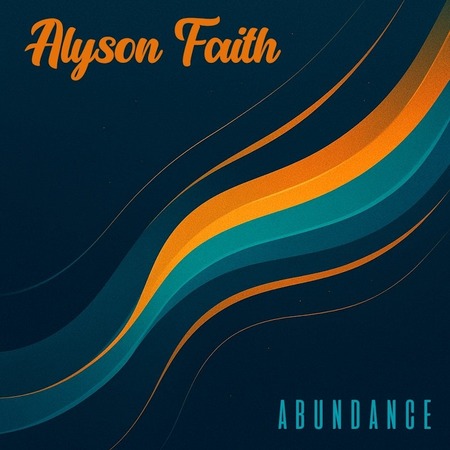
New York, NY — Singer-songwriter Alyson Faith is set to release her uplifting new single “Abundance,” a radiant and playful anthem that reminds listeners to celebrate who they are and appreciate the beauty that already surrounds them. Preview Attached!
Infused with an upbeat rhythm and bright, organic instrumentation, “Abundance” delivers a joyful message about rejecting comparison and embracing gratitude. Alyson’s expressive vocals and heartfelt lyrics invite listeners to pause, breathe, and reconnect with the world around them, a theme that feels both timely and timeless.
“This song is meant to be a playful, light, upbeat reminder that we don’t need to compare ourselves to anyone else,” says Alyson. “When we take a moment to bask in the gifts of Mother Nature and truly believe in ourselves, we realize that we are enough, and we have enough.”
“Abundance” captures Alyson Faith’s signature blend of soulful sincerity and pop-infused optimism, creating a sound that is both grounding and liberating. The song encourages listeners to shift their mindset toward possibility and self-love, celebrating life’s simple moments of joy and connection.
“Abundance” will be available on 12/12 on all streaming platforms.
Alyson Faith returns to The Bitter End on December 14th to celebrate the release of her new music, following the drop of her first single, “Abundance” on December 12th across all platforms. Get tickets here! A singer-songwriter known for soulful-raspy rock, emotional storytelling, and dynamic live performances, Alyson brings her newest songs to the stage with an all-star band featuring:
-
Oz Noy – producer and electric guitar, internationally acclaimed jazz-fusion innovator
-
Henry Hey – keyboards, worked with David Bowie and many other top artists
-
John Putnam – guitar, credits include Madonna and Broadway productions
-
Brian Delaney – drums, played with Melissa Etheridge and the New York Dolls
-
Mike Visceglia – bass, longtime collaborator with Suzanne Vega
-
Shy Kedmi – composer and keyboard
-
Andrea Watts & Scout Ford – soulful backing vocals
Alyson has performed nationally and internationally, shared stages with icons such as Pete Seeger and Paul Shaffer and collaborated with Bakithi Kumalo (“Let’s Be One”, featured in Rolling Stone India), and is the creator of Funkytown Playground, a widely-loved children’s music program.
This will be a live unveiling of Alyson’s newest music, powerful, heartfelt, and not to be missed.
The album ” Let’s Find Out” will be released in the spring.
Stay connected with Alyson Faith for release updates and new music:
Spotify | Facebook
